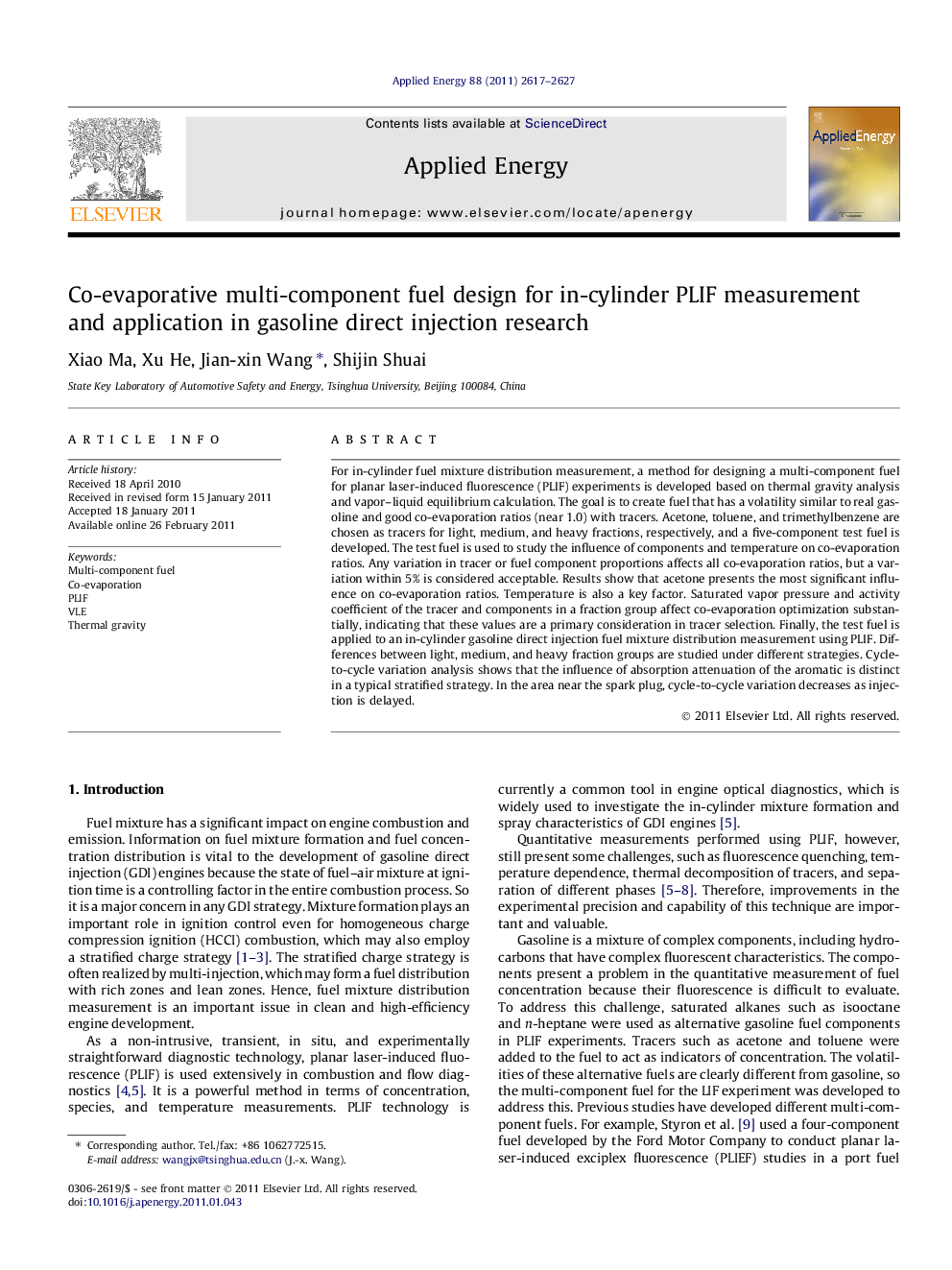| کد مقاله | کد نشریه | سال انتشار | مقاله انگلیسی | نسخه تمام متن |
|---|---|---|---|---|
| 243805 | 501937 | 2011 | 11 صفحه PDF | دانلود رایگان |

For in-cylinder fuel mixture distribution measurement, a method for designing a multi-component fuel for planar laser-induced fluorescence (PLIF) experiments is developed based on thermal gravity analysis and vapor–liquid equilibrium calculation. The goal is to create fuel that has a volatility similar to real gasoline and good co-evaporation ratios (near 1.0) with tracers. Acetone, toluene, and trimethylbenzene are chosen as tracers for light, medium, and heavy fractions, respectively, and a five-component test fuel is developed. The test fuel is used to study the influence of components and temperature on co-evaporation ratios. Any variation in tracer or fuel component proportions affects all co-evaporation ratios, but a variation within 5% is considered acceptable. Results show that acetone presents the most significant influence on co-evaporation ratios. Temperature is also a key factor. Saturated vapor pressure and activity coefficient of the tracer and components in a fraction group affect co-evaporation optimization substantially, indicating that these values are a primary consideration in tracer selection. Finally, the test fuel is applied to an in-cylinder gasoline direct injection fuel mixture distribution measurement using PLIF. Differences between light, medium, and heavy fraction groups are studied under different strategies. Cycle-to-cycle variation analysis shows that the influence of absorption attenuation of the aromatic is distinct in a typical stratified strategy. In the area near the spark plug, cycle-to-cycle variation decreases as injection is delayed.
Journal: Applied Energy - Volume 88, Issue 8, August 2011, Pages 2617–2627